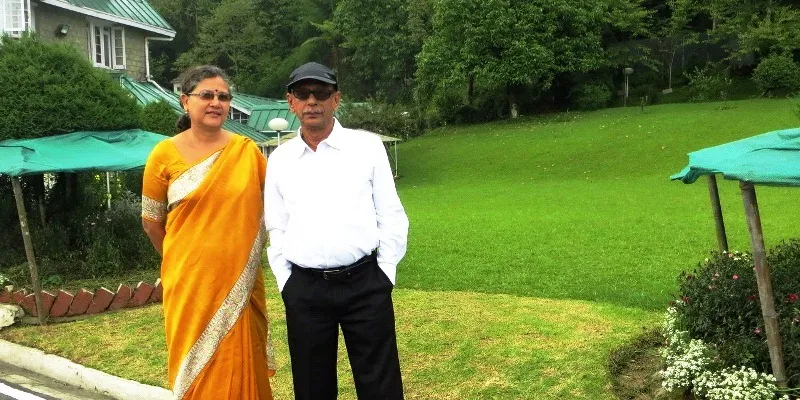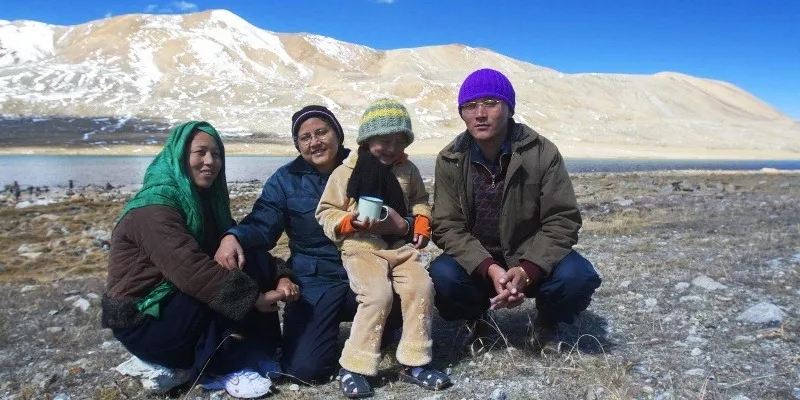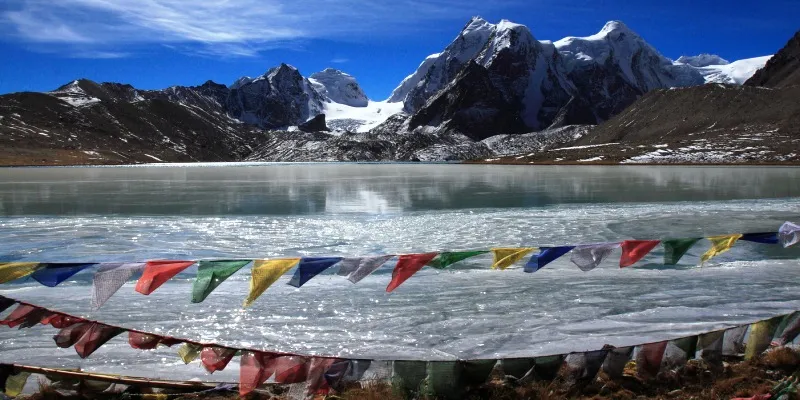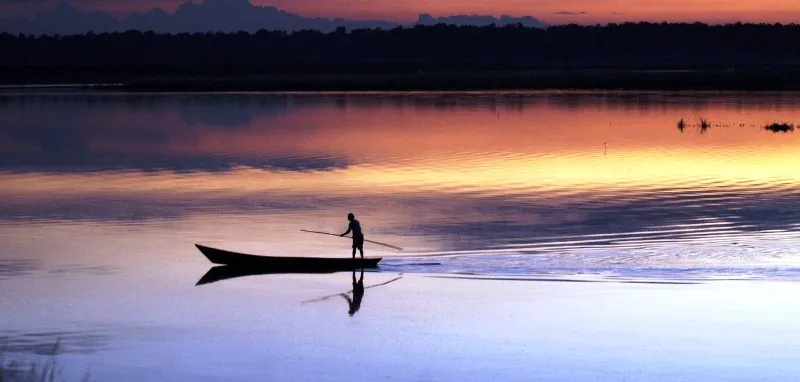Chronicling a river as their lost daughter, this couple wrote a book on Teesta’s journey from Sikkim to Bangladesh
Utpal and Samita's book weaves the story of the river as if it were a woman – through birth, adolescence, adulthood.

Imagine growing up amidst the hustle and bustle of Calcutta during the seventies. Utpal (64) and Samita Chaudhuri (59) met in the City of Joy, and soon realised that they have more than the campus of Jadavpur University to share.
A common love for nature brought them closer as Sikkim soon became their calling. They trekked the Himalayas together and twirled along the Teesta river– as students, as lovers, and as a married couple. When their daughter was born, they named her Teesta.

Teesta met her namesake when she was eight months old, and again when she was four. But fate was cruel. She fell sick at 11; ‘an incurable disease’ was what the doctors said. Two years later, at the age of 13, Teesta passed away. “My father died the next year, and four years later, my mother left us. Suddenly our home was empty, and we had nothing left to look forward to,” Utpal says.
And The Teesta Flows...
They never planned to write a book. Utpal and Samita can’t even say for certain why they went back to the mountains and the eternal river. They just did. Samita recalls,
“We went back again and again - mostly to North Sikkim. The gurgling sound of the rolling river on the embedded stones made us think of the sweet laughter and gaiety of our dear child.”
Utpal recalls how Tso Lhamo, India’s highest lake, and the birthplace of Teesta, filled their hearts with joy. It reminded them of their own daughter being born. Although there were strict restrictions on visiting the lake, which required special permission, they visited the place more than 40 times. The locals started to recognise them and they became friends. Utpal tells us,
“The people of Lachen and Lachung, the high altitude villages, were a bit indifferent in the beginning. But after our repeated visits, they slowly accepted us and invited us to stay with them. From eight to 80 all of them called us uncle and aunty.”

These villages are populated by Bhutias, who had migrated from Tibet in the thirteenth century. Despite language barriers, the couple, with help from younger interpreters, could communicate with the older members of the village. Utpal says,
“We came to know about the early periods of British interference in their lives. How the roads were built, how the domestic goats brought by outsiders at that time had infected the wild ones, and hundreds and hundreds of the latter died. When they were young, winter would see four feet of snow getting accumulated; but these days the depth is only 1 foot.”
The couple walked alongside the river, and before they know it, a journey by the river had begun - a journey that would chronicle the philosophies, lives and livelihoods, culture, folklore, diversity and emotions of the Bhutias, and several other people living by the Teesta.

A deeply personal journey
The book Utpal and Samita eventually wrote over the next eight years is hard to categorise. And the Teesta Flows is a memoir and a dedication. It is also, at the same time, a travelogue filled with over 160 lively photographs of the landscapes, villages, and people, and a close study of the 309-kilometre-long journey the river undertakes as it flows through Sikkim, North Bengal before eventually meeting the river Brahmaputra in Bangladesh. What makes the journey more interesting is how the journey of Teesta is personified like that of a girl. Samita tells us,
“In the beginning, the river emerges from a mother’s womb, and slowly starts to grow. As it goes ahead, it leaps and dances like a teenage girl. In the plains, the river acts as a lady with all the intricacies of life. Likewise, we have divided the chapters of the book as ‘The Birth of the Teesta’, ‘The Growing Girl’ and ‘The Lady’.”

The book quietly takes us on a poignant journey - where a river seen through the affectionate eyes of Utpal and Samita, and people and their lives merge. In the book, we meet the nature-worshiping Lepchas, believed to be the first settlers in Sikkim, who continue to face humiliation locally for their simple and docile lives. We meet the rural people of Bangladesh, who heavily depend on their rivers, even for transportation, and face the wrath of floods year after year. One can’t help but admire the strong social and environmental message the book manages to put across, despite remaining strongly personal and subjective.
Chronicling Lives

“We met a person, a charua, who told us that he had shifted his house 18 times. He has no grievance He says he will never be able to sleep at night if he doesn’t hear the splashing waters of the Teesta.”
The farming community of charuas also faces trouble from elephants, who rampage their crops frequently. They even grow extra crop for their large hungry visitors. “They plant banana trees or produce corn so that their own food is saved. We found that they have a great empathy for the elephants that come to their houses in search of food, and lovingly call them Ganeshbabu,” Utpal says.

Utpal suffered from blood cancer immediately after finishing the Indian side of their journey chronicling Teesta. He underwent treatment for the next one-and-half years, and went back to the river even before the doctor allowed him to. He adds,
“There are hundreds of stories that we gathered from the people who live by the Teesta, and we wrote them down in this book because we feel that they deserve more ears. We met a person who sells peanuts on the banks in the daytime and writes poetry on the Teesta at night. We have met another man who lost all his family members in the devastating flood of 1968, and still writes poetry expressing his heartfelt sorrow. We have translated some of these poems and included them in the book.”







